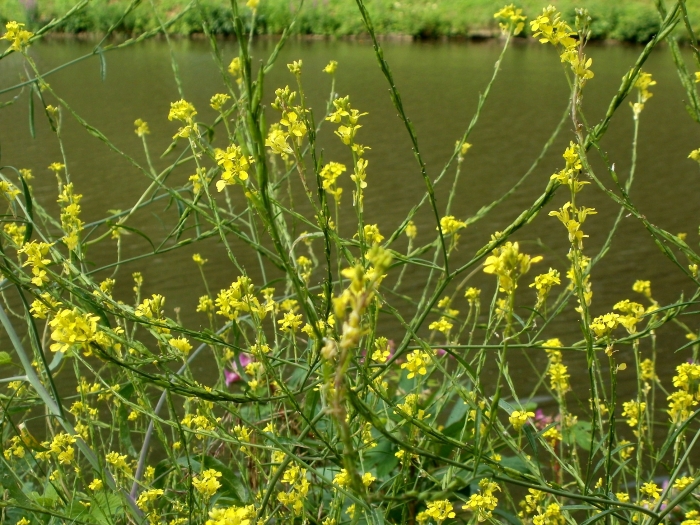Black Mustard
(Brassica nigra)
Black Mustard (Brassica nigra)
/
/

AnRo0002
CC0
































































Estimated Native Range
Summary
Black mustard is cultivated for its black or dark brown seeds, which are a popular spice, known for their pungent flavor. It is also used for its oil and as a cover crop to improve soil health. In gardens, it requires full sun exposure and does best with medium amounts of water in soils with slow or medium drainage. While it is easy to grow, it can become weedy and is considered extremely invasive in regions like California. It is important to manage its spread to prevent it from outcompeting native vegetation.CC BY-SA 4.0
Plant Description
- Plant Type: Herb
- Height: 4-6 feet
- Width: 1-2 feet
- Growth Rate: Moderate
- Flower Color: Yellow
- Flowering Season: Summer
- Leaf Retention:
Growth Requirements
- Sun: Full Sun
- Water: Medium
- Drainage: Medium
Common Uses
Bank Stabilization, Bee Garden, Border Plant, Butterfly Garden, Edible*Disclaimer: Easyscape's listed plant edibility is for informational use. Always verify the safety and proper identification of any plant before consumption., Salt Tolerant, Showy Flowers
Natural Habitat
native to temperate regions of Europe, Africa and parts of Asia, but it has been widely naturalized outside its native range
Other Names
Common Names: Khardal, Sort Sennep, Schwarzkohl, Schwarzer Senf, Senf-Kohl, Mostaza Negra, Mustasinappi, Moutarde Noire, Senape Nera, Svartsennep
Scientific Names: , Brassica nigra, Sinapis nigra, Brassica sinapioides, Brassica persoonii, Brassica bracteolata, Brassica nigra f. turgida, Brassica turgida, Brassica nigra var. torulosa, Melanosinapis communis
GBIF Accepted Name: Brassica nigra (L.) W.D.J.Koch